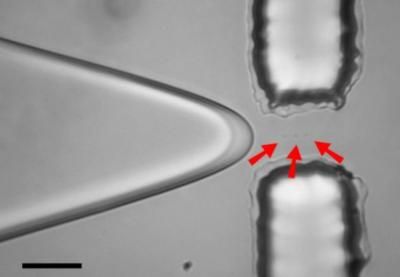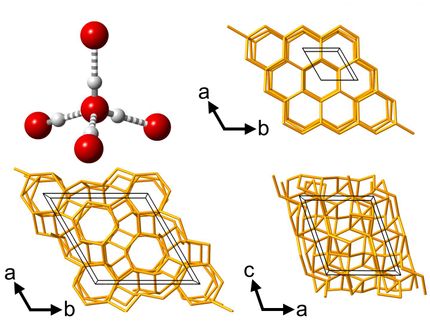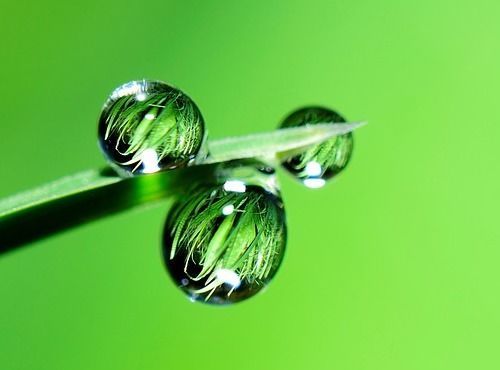New nanochemistry technique encases single molecules in microdroplets
Inventing a useful new tool for creating chemical reactions between single molecules, scientists at the National Institute of Standards and Technology (NIST) have employed microfluidics—the manipulation of fluids at the microscopic scale—to make microdroplets that contain single molecules of interest. By combining this new microfluidic "droplet-on-demand" method with "optical tweezers" that could merge multiple droplets and cause their molecular contents to react, the research may ultimately lead to a compact, integrated setup for obtaining single-molecule information on the structure and function of important organic materials, such as proteins, enzymes, and DNA.

Water flows through a microfluidic channel, roughly 35 microns wide, and enters a narrow constriction where it breaks up into droplets. Varying the width of the constriction changes the size of the drops and lacing the water with desired molecules of just the right concentration causes the resulting droplets to pick up single molecules of interest 99 percent of the time.
C. López-Mariscal and K. Helmerson, NIST
With the aid of NIST's Center for Nanoscale Science and Technology, physicists Carlos López-Mariscal and Kristian Helmerson created a tiny microfluidic device with a channel through which water can flow. Squeezed into a narrow stream by a mixture of oils whose viscosity, or resistance to flow, exerts pressure on it, the water then enters a narrow constriction. The water's abrupt pressure drop—accompanied by a dash of detergent—breaks its surface tension, splitting it into small droplets. (This same effect occurs when a thin stream of water falling from a faucet breaks up into small drops.)
The droplet sizes are highly uniform and can be tuned by adjusting the width of the constriction. With this technique, the researchers made droplets about a micrometer in diameter—or half an attoliter (half a billionth of a billionth of a liter) in volume.
In the microfluidic channel, the water is laced with desired molecules of just the right concentration, so that resulting droplets each pick up on average just one molecule of interest. Inside each droplet, the individual molecules of interest slosh around freely in the relatively roomy sphere, along with the water molecules that make up the bulk of every droplet.
By using laser beams, the researchers can move two or more single-molecule-containing droplets, cause them to coalesce, and observe the reactions through optical methods. For their initial reactions, the researchers are mixing fluorescent molecules that emit different colors, but in the future, they envision more interesting chemical reactions, such as those between an infectious agent and an antibody, or a chromosome and a drug. The researchers can shape a laser beam into any desired pattern and thereby trap not only single drops, but arrays of them, opening up new possibilities for single-molecule spectroscopy.
These products might interest you
See the theme worlds for related content
Topic World Spectroscopy
Investigation with spectroscopy gives us unique insights into the composition and structure of materials. From UV-Vis spectroscopy to infrared and Raman spectroscopy to fluorescence and atomic absorption spectroscopy, spectroscopy offers us a wide range of analytical techniques to precisely characterize substances. Immerse yourself in the fascinating world of spectroscopy!

Topic World Spectroscopy
Investigation with spectroscopy gives us unique insights into the composition and structure of materials. From UV-Vis spectroscopy to infrared and Raman spectroscopy to fluorescence and atomic absorption spectroscopy, spectroscopy offers us a wide range of analytical techniques to precisely characterize substances. Immerse yourself in the fascinating world of spectroscopy!





























































